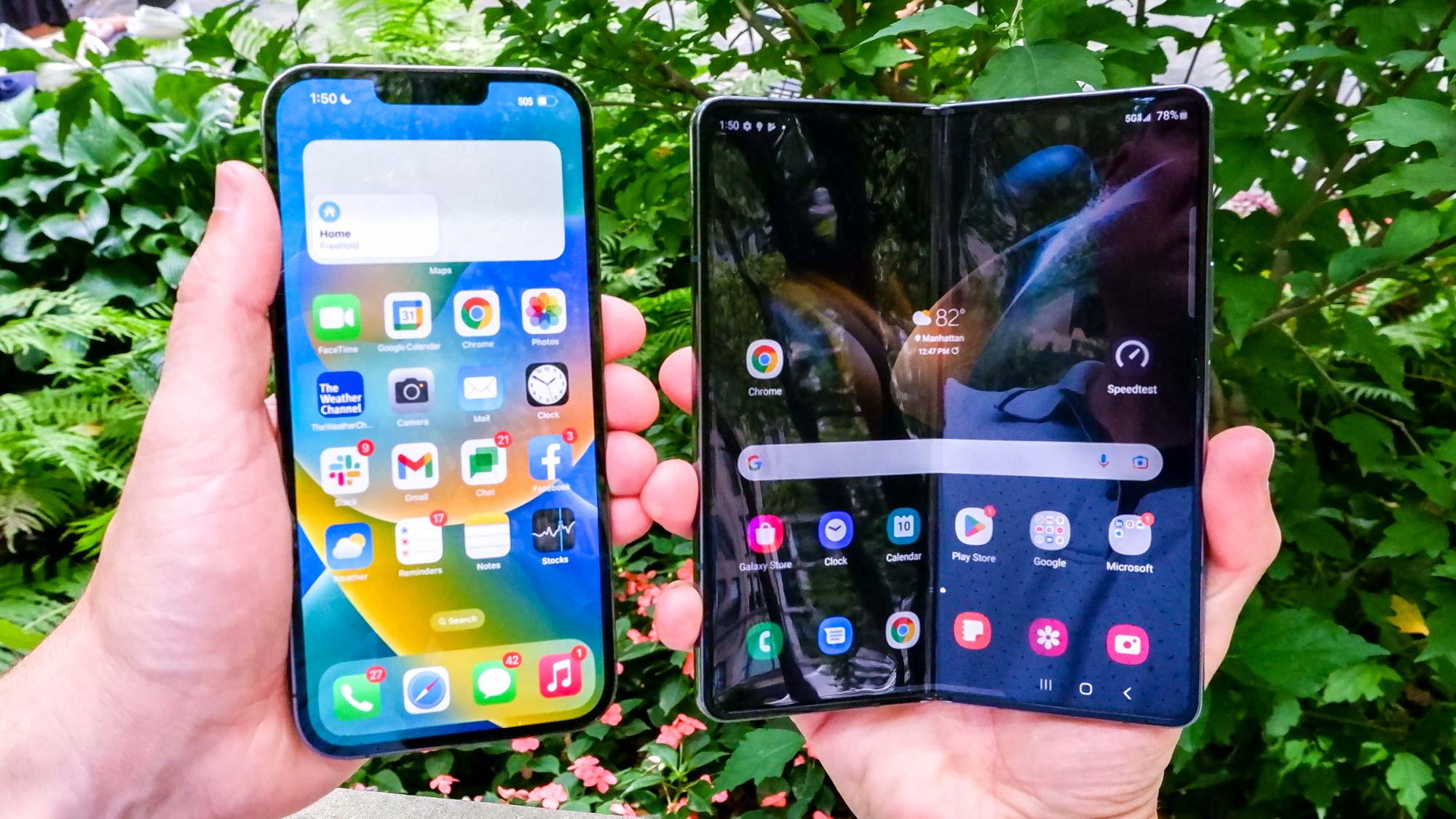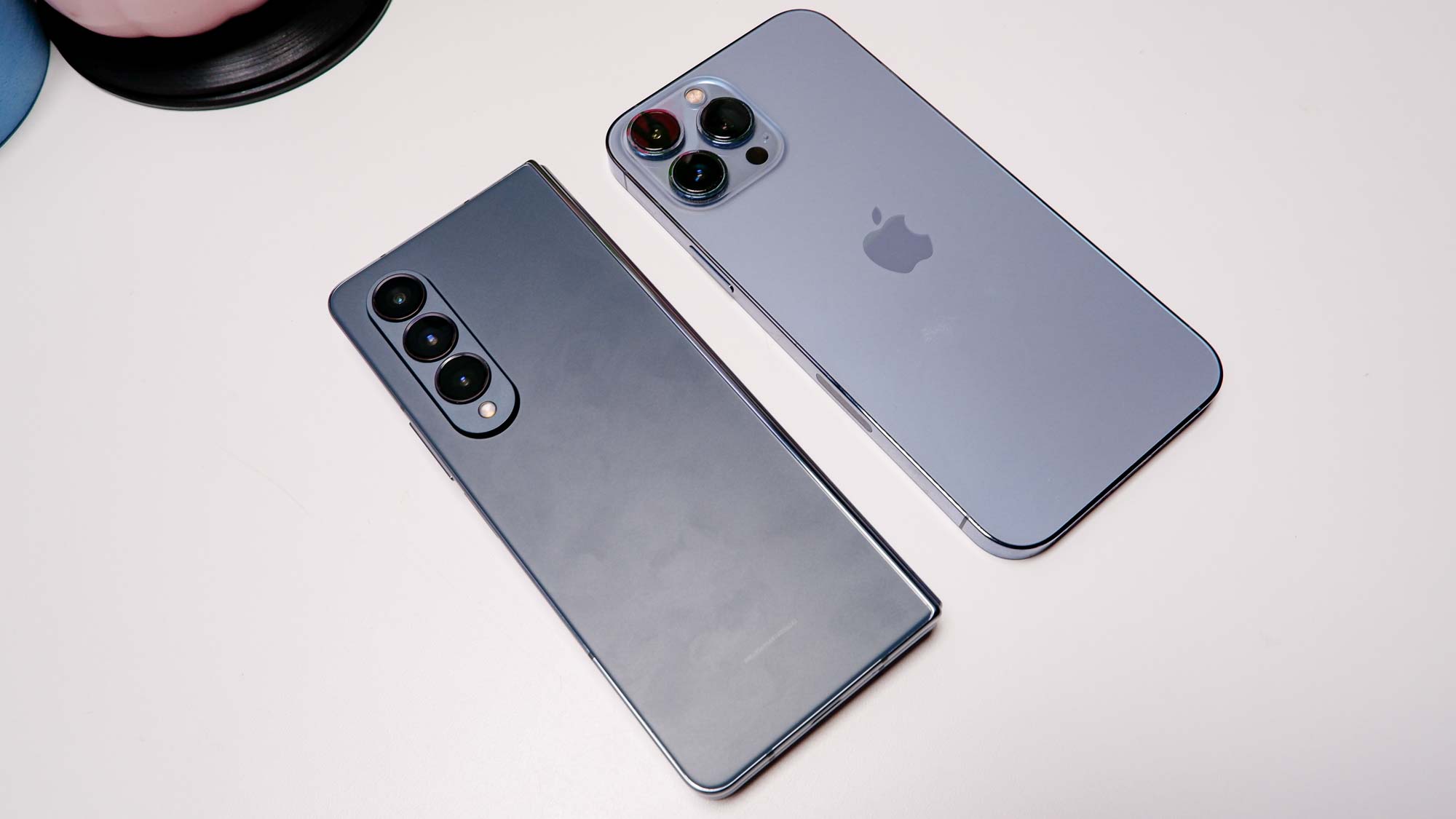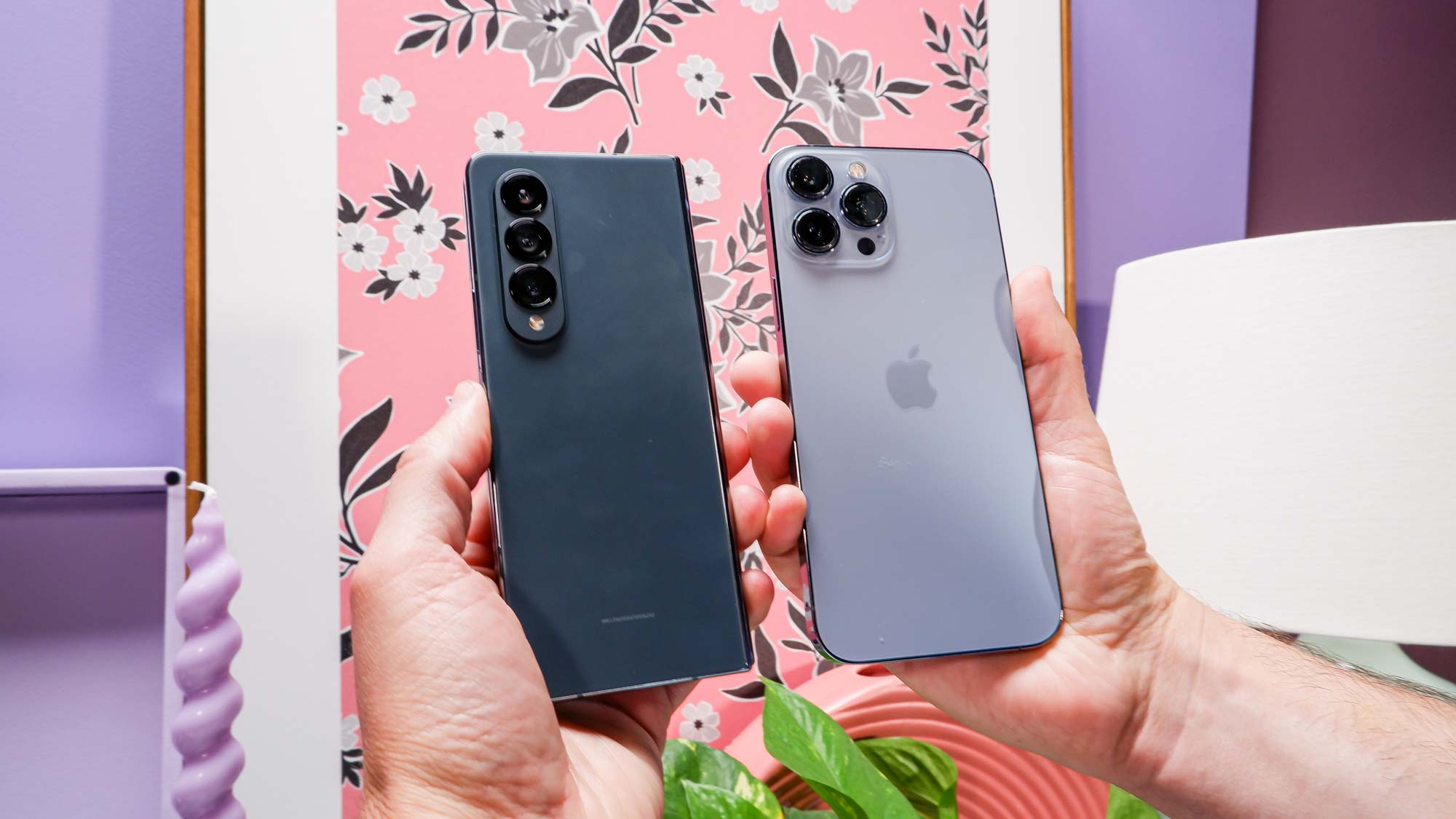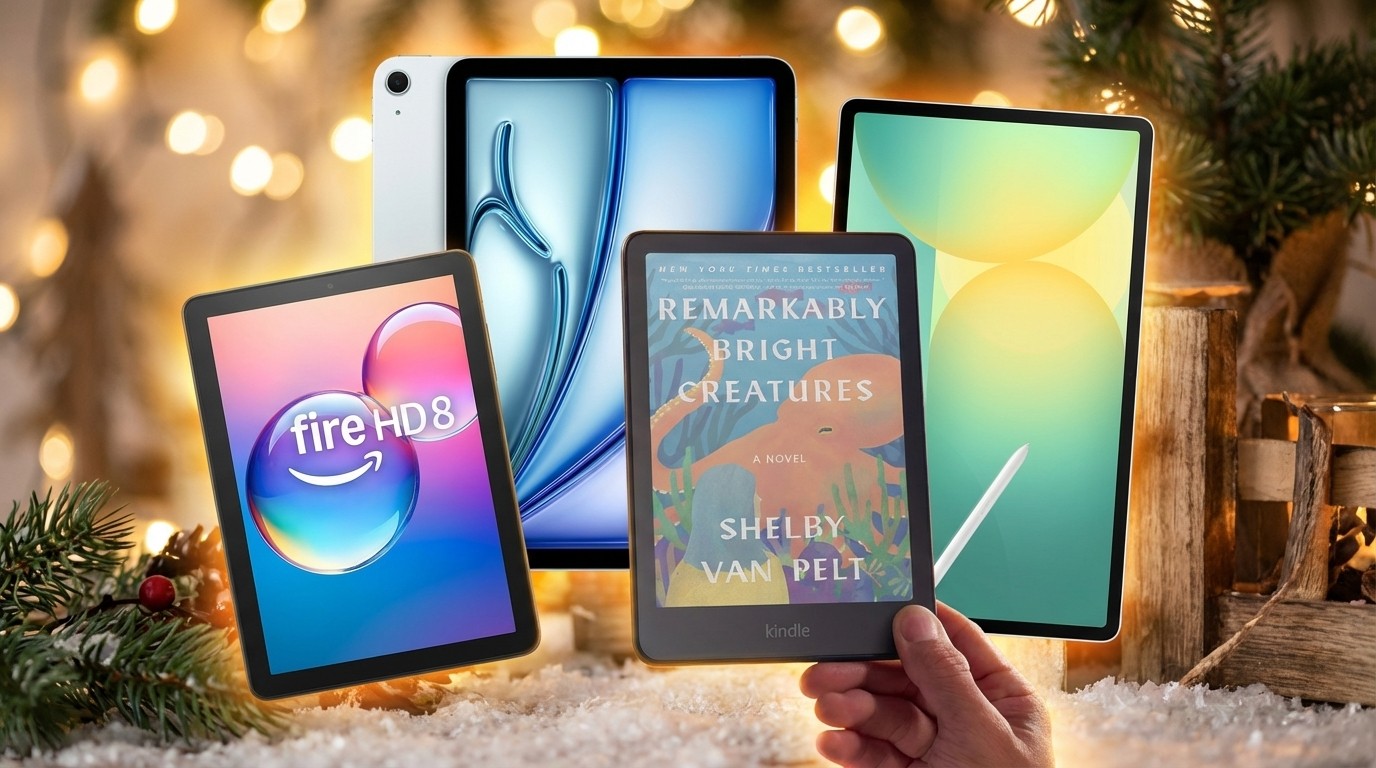Samsung Galaxy Z Fold 4 vs. iPhone 13 Pro Max: Which phone wins?
Does Apple or Samsung win in this face-off?

Editor's note: The iPhone 14 Pro Max launched on September 16. It brings a host of upgrades, including a new chipset, 48MP main camera, and the Dynamic Island. The iPhone 13 Pro Max is still a powerful device, but if you want the best, look to the latest model.
A Samsung Galaxy Z Fold 4 vs. iPhone 13 Pro Max face-off is more than just a bout between two devices from the two leading smartphone makers. It's as much about the benefits and limits of traditional phones versus the new foldable phones, and iOS vs. Android.
The Samsung Galaxy Z Fold 4 seems poised to become the best of the best foldable phones we've tested, but as impressive as the huge inner display and awesome multitasking features are, it's still a $1,799 device.
The iPhone 13 Pro Max, on the other hand, was the current pinnacle of traditional smartphone design before the launch of the iPhone 14 Pro Max. It was at top of our best phones guide for a reason, and it remains a solid choice. Its performance and photography are unmatched, although it's limited in ways that the Galaxy Z Fold 4 and other foldables aren't.
If you've got a generous smartphone budget, we've got all the important parts of the Galaxy Z Fold 4 vs. iPhone 13 Pro Max broken down and compared below. By the end, we can help you decide whether to go Pro with the iPhone, or get flexible with the Z Fold.
Samsung Galaxy Z Fold 4 vs iPhone 13 Pro Max: Specs
| Row 0 - Cell 0 | Samsung Galaxy Z Fold 3 | iPhone 13 Pro Max |
| Starting price | $1,799 | $1,099 |
| Display(s) | 6.2-inch AMOLED outer (2316 x 904)/ 7.6-inch AMOLED inner (2176 x 1812) | 6.7-inch OLED (2778 x 1284) |
| Refresh rate | 120Hz adaptive (both displays) | 102Hz adaptive |
| Chipset | Snapdragon 8 Plus Gen 1 | Apple A16 Bionic |
| RAM | 12GB | 6GB |
| Storage | 256GB, 512GB, 1TB | 128GB, 256GB, 512GB, 1TB |
| Rear cameras | 50MP main, 12MP ultrawide, 10MP 3x optical telephoto | 12MP main, 12MP ultrawide, 12MP 3x optical telephoto |
| Front camera(s) | 10M selfie (outer), 4MP under-display selfie (inner) | 12MP selfie |
| Battery | 4,400 mAh | 4,352 mAh |
| Charging | 25W wired, 7.5W wireless | 20W wired/15W wireless |
| Size | 6.1 x 2.6 x 0.55-0.62 inches (closed) /6.1 x 5.1 x 0.21 inches (open) | 6.3 x 3.1 x 0.3 inches |
| Weight | 9.2 ounces | 8.5 ounces |
| Dust/water resistance | IPX8 | IP68 |
Samsung Galaxy Z Fold 4 vs iPhone 13 Pro Max: Price and availability
Apple's been selling the iPhone 13 series, including the iPhone 13 Pro Max, since last September. It currently retails at $1,099 for the basic 128GB model, although keep in mind that we're expecting the iPhone 14 and iPhone 14 Pro in a matter of weeks. Take a look at our iPhone 14 Pro vs. iPhone 13 Pro face-off to see what the differences are rumored to be.
The Galaxy Z Fold 4 is going on sale on August 26, with a base price of $1,799 with 256GB of storage. That's considerably more than the iPhone, but that's what you get when you go for a foldable that doubles as a tablet. If you want a more comparably priced foldable, there's also the Galaxy Z Flip 4, although its capabilities aren't quite as good a match for the iPhone.
Get instant access to breaking news, the hottest reviews, great deals and helpful tips.
Winner: iPhone 13 Pro Max
Samsung Galaxy Z Fold 4 vs iPhone 13 Pro Max: Design
As a foldable, the design of the Galaxy Z Fold 4 is more complicated than the average smartphone. With the phone closed, you have a 6.2-inch regular phone display through which you can use all the Z Fold 4's features, but you only get the full experience by opening the fold up to see its full 7.6-inch display, comparable in size to a small tablet.

The iPhone 13 Pro Max is a normal slab of smartphone, aside from Apple's unique design flourishes like the Face ID notch and the flat sides. As a result it's lighter than the Z Fold 4 by 0.7 ounces, and is a little taller and wider, plus a lot skinnier than the folded-up Samsung. It can't unfold into a larger version of itself, but it certainly takes up less space in a skinny pocket.
Apple also wins for durability. Although the front and back of the Galaxy Z Fold 4 uses Gorilla Glass Victus Plus, the inner display is comparatively fragile. Apple has equipped the iPhone 13 Pro Max with Ceramic Shield glass, which is also pretty tough, but without a folding screen it'll stay fully functional even after a nasty drop. The iPhone also has a full IP68 dust/water resistance rating, whereas the Galaxy Z Fold 4 is only IPx8, meaning it has no official protection against intrusion by dust, sand, gravel and other small damaging items.

For colors, the Galaxy Z Fold 4 is available in Phantom Black, Graygreen or Beige (or Burgundy if you buy it through the Samsung store). The iPhone 13 Pro Max offers more choices, with the range consisting of Graphite, Gold, Silver, Sierra Blue and the more recently introduced Alpine Green.
Winner: iPhone 13 Pro Max
Samsung Galaxy Z Fold 4 vs iPhone 13 Pro Max: Displays
The Galaxy Z Fold 4's cover display isn't impressive when you compare it to the iPhone 13 Pro Max's screen. It measures 6.2 inches rather than 6.7 inches, and offers only an HD+ resolution rather than Apple's roughly FHD+ resolution. Both feature adaptive 120Hz displays though, which makes scrolling through your apps smooth while also saving battery when required.
Even the excellent iPhone screen doesn't really compare to the Z Fold 4's inner display though. It's a whopping 7.6 inches across, uses a squarer aspect ratio for enhanced productivity and also has a 120Hz refresh rate. It causes complications for the design as we noted above, and there's still a bit of a crease down the center of the display, but you won't find a larger display on a device that's still a phone.
In the table below, you'll see the results of our display testing on both phones, and we can see that the Galaxy Z Fold 4 comes off the best here.
| Row 0 - Cell 0 | Samsung Galaxy Z Fold 4 (outer/inner) | iPhone 13 Pro Max |
| Delta-E (lower is better) | 0.33/0.34 | 0.21 |
| sRGB color gamut (percentage) | 207/224 | 109 |
| DCI-P3 color gamut | 146/158 | 77 |
| Max brightness (adaptive mode on) | 870/905 nits | 837 nits |
Both of Samsung's displays are brighter and more colorful than the iPhone 13 Pro Max's screen by some margin. However, the iPhone still provides a better Delta-E color accuracy score, for those who value seeing video and photos precisely as they were taken.
Winner: Samsung Galaxy Z Fold 4
Samsung Galaxy Z Fold 4 vs iPhone 13 Pro Max: Cameras
Both the iPhone and the Samsung use three rear cameras with the same functions but different resolutions. The iPhone 13 Pro Max uses three 12MP cameras for main, ultrawide and 3x optical telephoto duties, while the Galaxy Z Fold 4 uses a 50MP main camera, 12MP ultrawide camera and 10MP 3x optical telephoto camera.

For forwards-pointing snappers, the iPhone again uses a 12MP sensor in its selfie camera. The Galaxy Z Fold 4 is greedy though, offering two selfie cameras. The first, a 10MP camera, is in a punch-hole on the cover screen, while the second is a 4MP under-display camera on the inner display.
Considering the iPhone 13 Pro Max tops our best camera phones guide, it'll be hard for the Galaxy Z Fold 4 to match up to it. However. in the comparisons below, the Z Fold 4 does a surprisingly good job in keeping up with the iPhone.
Take for example this shot of a statue. The color of the iPhone image is pleasantly warmer than the Z Fold 4's, but you get more detail from the darker parts of the image taken by the foldable.
Also take a look at this portrait shot of TG's global editor-in-chief Mark Spoonauer. Again he's given a warmer glow by the iPhone, but the Z Fold gives just as much detail and just as attractive a bokeh effect.
Looking now at an ultrawide shot, the difference is smaller. But if anything, the Z Fold 4's got the better image here, providing extra brightness that helps bring out the background buildings. The grass is a bit oversaturated, but still looks pleasant.
This zoom shot focussing on the Chrysler Building shows there's little difference between the phones when it comes to 3x telephoto camera performance. We will be performing more camera tests at max zoom level and in low light.
In this low light shot I give the edge to the Galaxy Z Fold 4. The entire scene is more brightly lit. However, the color in the cup is richer in the iPhone 13 Pro Max.
At 15x zoom the Galaxy Z Fold 4 does a better job rendering the buildings in this shot and the tiles on the roof to the left look more defined. The iPhone 13 Pro Max's photo has a more digital zoom look and it's a bit fuzzy.
And here you can see how much further the Galaxy Z Fold 4 can push with its 30x Space Zoom. It's twice the iPhone 13 Pro Max. Granted, the "GWR" letters on the building aren't that crisp, but it's nice to have the option to go in more.
Even if you prefer the iPhone's image processing, the Z Fold 4's cameras are definitely a considerable upgrade on the Galaxy Z Fold 3's, and are in line with those used on the Galaxy S22, which also features on the best camera phones guide. We're not impressed by the under-display camera though, which you'll probably want to reserve using only for video calls rather than taking nicely posed selfies.
Winner: iPhone 13 Pro Max
Samsung Galaxy Z Fold 4 vs iPhone 13 Pro Max: Performance
The beating heart of the Galaxy Z Fold 4 is the Snapdragon 8 Plus Gen 1, paired with 12GB RAM. As a result, we get some of the best scores of any Android phone released this year.
Note that that's Android phones, not all phones. The iPhone 13 Pro Max's A15 Bionic chipset with its 6GB RAM still conquers all the competition, including the Z Fold 4 on all the major tests we run, as you can see below.
| Row 0 - Cell 0 | iPhone 13 Pro Max | Samsung Galaxy Z Fold 4 |
| Geekbench 5 (single core/multi-core | 1,720/4,549 | 1,328/3,831 |
| Wild Life Unlimited (score/FPS) | 11,418/68 | 8,819/52.83 |
| Wild Life Extreme Unlimited (score/FPS) | 2,584/15 | 2,677/16.03 |
| Adobe Premiere Rush (mins:secs) | 0:25 | 0:45 |
The iPhone 13 Pro Max wins on Geekbench, which measures overall performance, as well as on 3DMark Wild Life (graphics), though the Samsung pulls ahead on the Extreme portion of the test. And the iPhone 13 Pro Max transcoded a 4K video faster than the Z Fold 4 in Adobe Premiere Rush, taking 20 seconds less.
Whichever phone you look at, you've got plenty of storage room. Both phones offer the same 256GB, 512GB and 1TB storage options, but the iPhone 13 Pro Max also has a base 128GB version available too, good if you want to keep the price down.
Winner: iPhone 13 Pro Max
Samsung Galaxy Z Fold 4 vs iPhone 13 Pro Max: Battery life and charging
Inside the Galaxy Z Fold 4 are a pair of batteries with a combined capacity of 4,400 mAh. That's more than the 4,352 mAh cell in the iPhone 13 Pro Max, but a) Apple has always managed more with less when it comes to batteries, and b) the Z Fold 4 has to power two displays, one significantly larger than average.
The iPhone 13 Pro has some of the best phone battery life of any phone we've tested, lasting 12 hours and 16 minutes in our custom battery test at its normal adaptive 120Hz refresh rate. The Galaxy Z Fold 4 manages an impressive 11 hours and 31 minutes on the same test, but only by turning the screen to a fixed 60Hz mode. We'll report back with more results soon.
The Galaxy Z Fold 4 has a slight advantage with charging speed. It can power up at up to 25W, instead of just 20W like the iPhone, which means after half an hour plugged in, the Z Fold 4 reaches 42% charge from 0%, rather than 40% as the iPhone does.
The iPhone should have the advantage for wireless charging though, as its MagSafe standard can provide up to 15W. The Z Fold 4 has to make do with the 7.5W basic Qi charging standard.
Winner: iPhone 13 Pro Max
Samsung Galaxy Z Fold 4 vs iPhone 13 Pro Max: Software

The iPhone 13 Pro Max runs on iOS 15, but will soon be updating to iOS 16, which includes upgrades like a customziable lock screen, the ability to edit and unsend text messages and iCloud Shared Photo library.
The Galaxy Z Fold 4 ships with Android 12L in the form of OneUI 4.1. Normally which OS is better comes down to personal preference, but there's more to this story in the case of the Z Fold.
To be specific, the Galaxy Z Fold 4 uses Android 12L, a special version of Android 12 optimized for big screens. It's enabled Samsung to add more tablet-like features such as a taskbar to more easily swap between apps, and means more apps are designed to work with the larger screen, or in miniaturized versions when using the split-screen feature.
Multitaskers will especially love the Galaxy Z Fold 4's ability to run two apps side by side. And you can easily drag and drop content from one window to another. For example, we could upload photos right from the Gallery app to Google Drive.
The Galaxy Z Fold 4 also offers S Pen support, something that the iPhone has yet to do. If you want to doodle or try and get some serious multi-tasking done on a phone, the Galaxy Z Fold 4 is definitely the phone to go for.
Winner: Samsung Galaxy Z Fold 4
Samsung Galaxy Z Fold 4 vs iPhone 13 Pro Max: Overall winner
As you can see in our scoring below, the iPhone 13 Pro Max is the better overall phone. But it's also clear that there are some areas where the Galaxy Z Fold 4 holds an advantage, and for some its sheer versatility will make Samsung's foldable worth the splurge.
| Row 0 - Cell 0 | Samsung Galaxy Z Fold 4 | iPhone 13 Pro Max |
| Price (10) | 4 | 7 |
| Design (10) | 7 | 9 |
| Displays (15) | 15 | 13 |
| Cameras (20) | 17 | 19 |
| Performance (15) | 13 | 15 |
| Battery life and charging (20) | 18 | 20 |
| Software and special features(10) | 10 | 8 |
| Total (100) | 84 | 91 |
The Galaxy Z Fold 4 shows up the iPhone 13 Pro Max when it comes to multitasking, productivity and display quality. If you need a bunch of app windows open at once, need to do some note-taking with a stylus, or just want to relax with some vivid big-screen video streaming or gaming, you won't get a better experience than the Z Fold 4.

The problem is that the iPhone 13 Pro Max does better almost everywhere else. Its cameras are overall still the best in the business, its battery life is top-notch, the performance is unmatched and the design is much more portable. And that's not even getting to the fact it's $600 cheaper, even if you're buying an equivalent amount of storage space.
Decided the iPhone 13 Pro Max is the phone for you? One factor you may want to consider is that the iPhone 14 Pro and iPhone 14 Pro Max are probably just around the corner, so you should be better off waiting rather than buying any iPhone 13 model.
If you've sided with the Galaxy Z Fold 4, then take a look at how to pre-order Samsung Galaxy Z Fold 4 to make sure you get yours as soon as possible.

Richard is based in London, covering news, reviews and how-tos for phones, tablets, gaming, and whatever else people need advice on. Following on from his MA in Magazine Journalism at the University of Sheffield, he's also written for WIRED U.K., The Register and Creative Bloq. When not at work, he's likely thinking about how to brew the perfect cup of specialty coffee.
